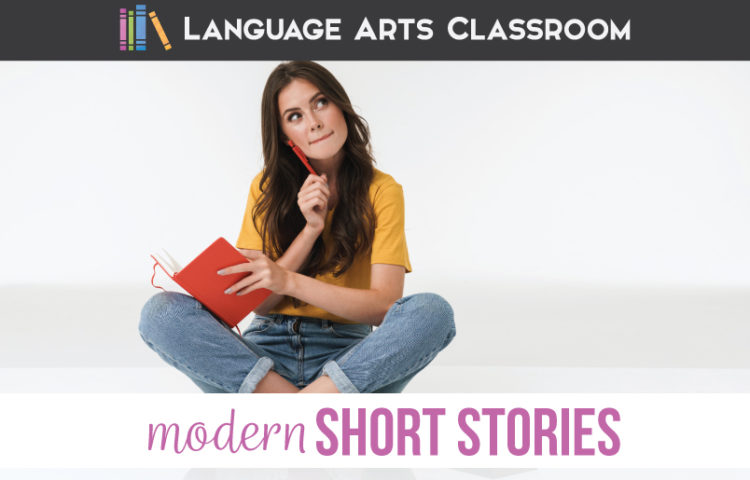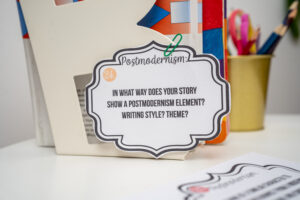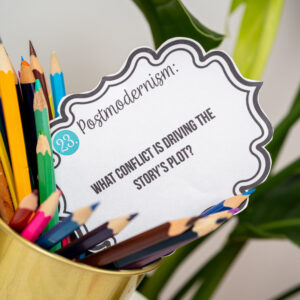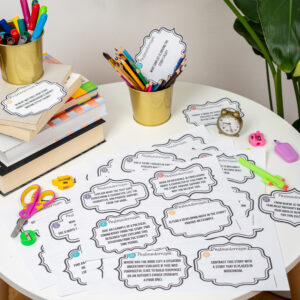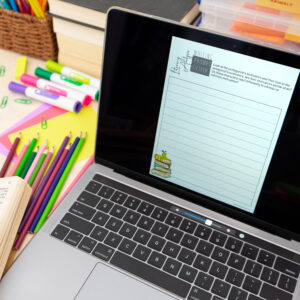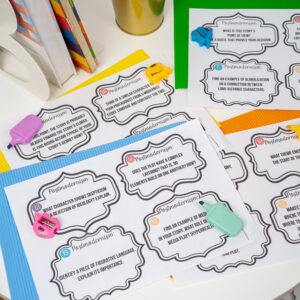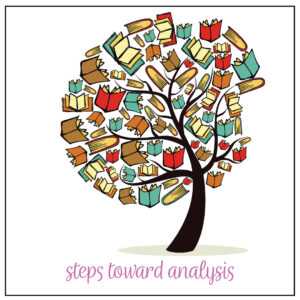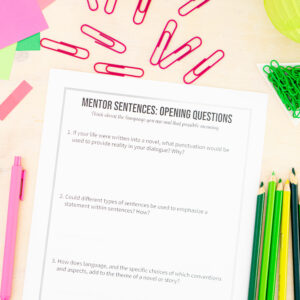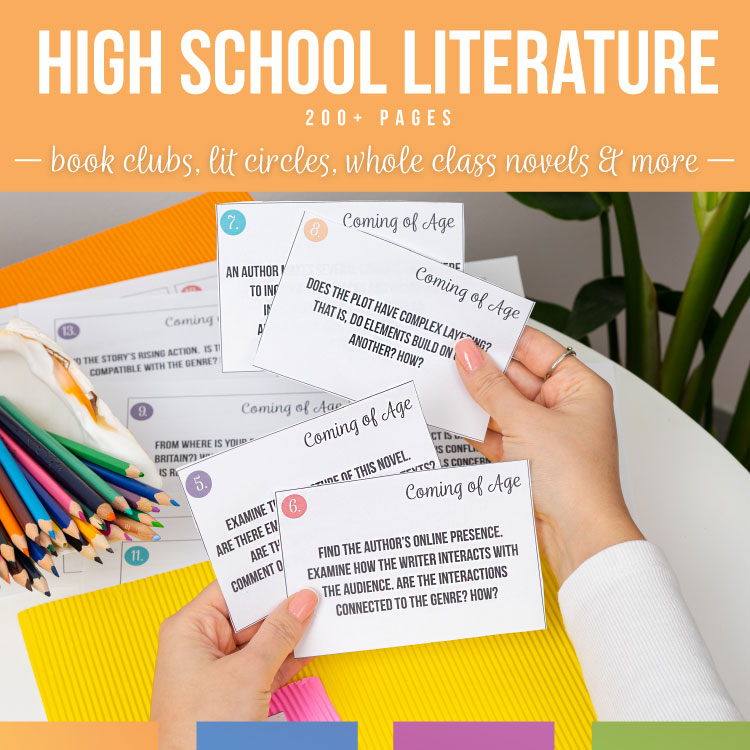What modern short stories for high school English classes can you teach? Add these modern and diverse voices to your curriculum. High school short stories can reflect our students’ lives.
Modern short stories for high school English students are a must. While students enjoy older stories, I have found that when students are familiar with “alive authors” (as my students call them), they are more likely to engage with their work in other ways.
For instance, if I want students to be active in their classroom library, I need students to believe that literature matters to them and can be part of their lives. One way to work toward building that culture is to teach modern short stories. People today, people who are alive, still write short stories.
I follow writers on Twitter who promote their works. I also (try!) read literary publications that publish small pieces. Once you engage in the literary community a bit, you’ll be able to find more pieces to fit your specific community of learners.
How can I incorporate modern short stories for high school English?
Start small! If you are committed to incorporating contemporary short stories into class, the next time you take a long look at your collection of short stories, take a quick read at the list below and attempt one.
Below, are seven (with a few bonus links) short stories that you can teach with your high school English classes. Dynamic high school short stories are online, often for free.
Finally, I outlined activities to accompany these stories. The first time running through a new reading list with classes, some suggestions might help.
Continue reading for easy pieces to put in your high school curriculum.
7 Modern Short Stories for High School English
Moments Earlier
“Moments Earlier” by Kate Doyle is an excellent piece for discussing dialogue and pacing. The main character reflects on his friend (a young twenty-two year old) who collapses and eventually dies. The narrator reflects from college to the present to family events. High school students often enjoy reading about college, and “Moments Earlier” is a clean story.
Only Daughter
I love Sandra Cisneros, and I teach her writing whenever I can. “Only Daughter” is less of a short story as it is a reflective essay, but I often teach it in a short story unit when we discuss fiction and nonfiction.
You can also use “Only Daughter” alongside one of Cisneros’ short stories, such as Eleven. The teaching and discussion over those two pieces normally takes me two class periods.
What the Dead Man Said
Chinelo Onwualu’s short story is dystopian and covers climate change. Humans have bioengineered forests, but they did not procreate enough. As the main character returns home for his father’s wake, students will see a futuristic vision of life renewal. The story builds with suspense as relatives at the wake question Azuka.
Teachers can easily add informational texts alongside Onwualui’s short story. Also, because the story is dystopian, it is a perfect way to introduce a longer dystopian story. The subject matter is intense, and this short story, while stunning, might work best with juniors and seniors. I taught this short story with my seniors in creative writing.
Possible Disruptions on the Occasion of My High School Graduation
This story is another piece that works well with older students. (You could also give a disclaimer for language.) The story is an application to college by a student who has a far superior (in the academic realm) twin.
The story offers many discussion points. What sort of students do colleges want? Are college essays forced parts of American teenage life? Students typically have opinions on writing them, making this story applicable to them.
On the Bridge
“On the Bridge” by Todd Strasser allows students to wrestle with conflicts between peers. I use this short story with freshman as a way to build relationships with them. I ask students to reflect on the story’s theme and the characters’ struggles, and then I respond to their ideas. Freshmen always enjoy “On the Bridge.”
Neil Gaiman
Students know who Neil Gaiman is because they enjoy Coraline. Many of them have read “Click Clack the Rattle Bag.” He has other short stories on his website if you are looking for additional ones.
Fresh Ink
I bought Fresh Ink after seeing a discussion of it on Instagram. Simply put, I am loving all of the stories in it! I am going to pull from it for years, so I highly recommend it. If I’m remembering correctly, it was about $13.
Finally, since I am working to diversify my curriculum, I found several lists of short stories that will work for older young adults. I know buying books can be expensive, but you can maybe get a few of them through a library to start. Modern short stories for high school English classes can work into curriculums at various standards.
Activities for Modern Literature
Modern literature deserves a modern approach. Literature standards match well with recent literature because students see their important messages in their own lives.
Teaching modern short stories for high school English can take several approaches, looking at American literature from a fresh perspective or adding speculative fiction or feminist literature for critical thinking. Below are activities that make great options with new units.
Short writing response
One activity often overlooked is a simple writing response. Years ago, students had a notebook that served as their reflection tool in class. Students would add the date and write, without a grade attached.
These notebooks are making a return in the classroom because AI tempts “correct” answers. Physically writing allows freedom to explore topics, freedom from worrying about a right answer.
With whatever prompt you provide students, allow them to explore.
Partner discussions
Brains work well together but too often, everyone pairs up with the same person. To provide variety and encourage authentic discussion with unique perspectives, I use cards to assign partners for a ten-minute discussion. As students enter the classroom, I hand them a card. I instruct them to think about their answer.
Then, we match up with the peer who has that same card. Students elaborate, discuss, disagree. Finally, I circle back around to partners sharing their ideas with the class. Dependent upon the length of the story and the interaction with the cards, the partner discussions might take the entire class period.
Self-paced literary analysis
This literary activity serves my reluctant readers well because the options to analyze are built-in and endless options exist. Readers choose two options, perhaps character and theme. After choosing those two pieces, they then answer a question about how the characters build the theme.
Then, they have an option for branching off with that analysis, perhaps examining how one character aligns with a certain theme. OR! Another option is to add another literary piece, perhaps adding how the setting (where is the character often found?) contributes to the theme because of availability or conflict.
Since this activity is digital, teachers can jump in to what students are building and add well-placed questions to build literary analysis.
I look at this literary analysis activity as a physically “chunked” alternative to the essay.
Language
English language standards for older students are difficult, but when we connect them to high-interest literature, students see grammar outside of “mistakes.”
For instance, connotation and denotation matter a great deal concerning vocabulary use. Pull vocabulary words and analyze the author’s implications of certain word choice, and then discuss options that would change the story’s meaning.
Parallelism is another language element that works well as mentor sentences. Since parallelism is difficult to fix, show young readers examples of it used well.
So—hopefully, this entire blog post encouraged you to implement some modern short stories for high school English students. If you have any suggestions, please add them below.
Other Short Story Ideas
Whether you are completing an entire short story unit or sprinkling short stories throughout your curriculum, you’ll appreciate the ideas and free downloads I have on my blog. Read about:

